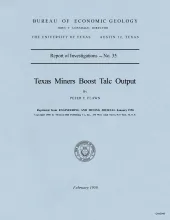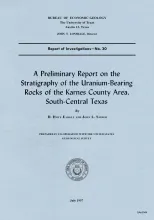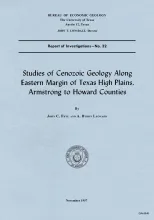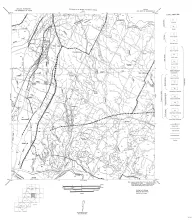Texas' Hudspeth County talc mining, begun in 1952 when Southwestern Talc Corp. carried out pioneer exploratory operations, has expanded during the last five years and can today claim six active operations. These Include (1) Southwestern Talc Corp., Llano, Texas, (2) West Texas Talc Corp.
Uranium was discovered near Tordilla Hill in Karnes County, south-central Texas, in the fall of 1954, in the upper part of the Jackson formation of late Eocene age. By July 1955, 14 uranium prospects were reported as far northeast as Fayette County, northeast of Karnes County, and southwest to Duval County, south Texas, over a distance of about 190 miles. Uranium minerals or radioactive rocks have been found in tuffaceous sand, silt, or bentonitic clay in at least seven different stratigraphic positions ranging in age from late Eocene to Pliocene.
The Devonian-Mississippian transition outcrops of central Texas are here described summarily and assigned to a new stratigraphic unit, the Houy Formation. The beds included are mainly Upper Devonian, but partly Lower Mississippian. Locally a basal fraction may be Middle Devonian. Although the deposits included are diverse and their associations complex, the maximum surface thickness so far known is only about 17 feet.
The eastern margin of the High Plains in central western Texas affords particularly good opportunity for study of late Cenozoic geology. The topography of the area is dominated by the southernmost segment of the late Tertiary mantle of fluvial sediments, isolated from the central and northern High Plains by the valley of the Canadian River. The eastern escarpment presents many exposures and the canyons that extend into the plains contain, in addition, a nearly complete sequence of Pleistocene terraces and deposits.
Fourteen black-and-white geologic maps prepared in 1957 and 1959 and obtained from the Department of Geological Sciences, University of Texas, and sold by the Bureau of Economic Geology. Geology compiled by F. L. Whitney; drafted by S. Espey, W. M. Strong, or W. L. Brooks; edited by K. P. Young.
Fourteen maps are included:
MM0016-A-Austin, NE (Travis and Williamson Counties)
MM0016-B-Austin, SW (Hays and Travis Counties)
MM0016-C-Bastrop (Travis County section)
MM0016-D-Blanco, SE (Hays County)






